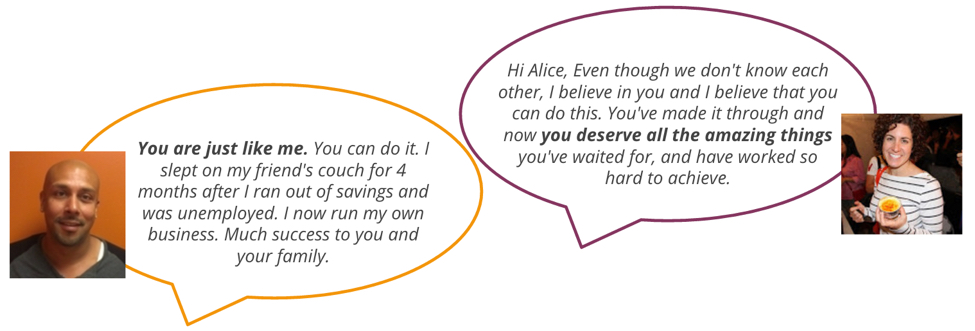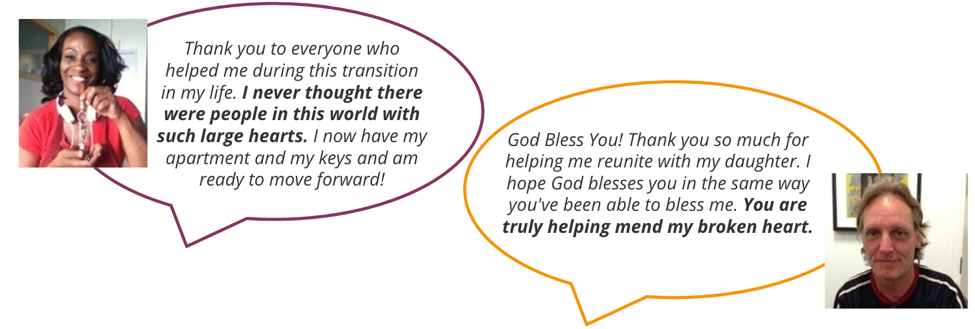Raise money for your cause. Raise money for yourself. Like this post. Share this article. Wear red. Wear a pink hat. Boycott. Volunteer. Walk. Run. March. Buy one, give one. Change your profile pic to pink-rainbow-black. We are awake, engaged, horrified, frightened and overwhelmed. We don’t know what to do. We can’t do enough.
All these truths and real reactions are swirling through the minds of people in communities across the U.S., yet these sweeps and flows don’t serve to help us understand one another, bridge gaps or give hope to someone we know, understand and value. When the digital nonprofit Benevolent (www.benevolent.net) launched five years ago as a small startup out of Chicago, we could not have predicted that our digital, human and political trends would bring us to where we are today, but they have and we’re glad that we’re here to lend a bit of humanity to it all.
At Benevolent, we believe in the power of individuals who, even giving in small amounts, can collectively make a big difference. We believe that technology is not the answer, but makes things possible. Through Benevolent’s online platform, low-income Americans tell their stories of one-time challenges as they strive to reach personal goals; local professionals from nonprofits, churches and schools validate those stories; and caring everyday donors step in to donate to help.
While the challenges facing our communities are growing, disconnection and division are on the rise and wreaking havoc on how we connect with one another. In this context, and with the demands facing individuals and families, Benevolent stands out as a philanthropic offering that brings dignity and self-determination to our interchanges. With the generosity of everyday givers, Benevolent’s digital approach makes it possible for low-income individuals and families to access the support they need to overcome one-time barriers to pursue their goals.
When a family is asset-poor and on the financial margins, often a single hurdle can be the thing that keeps a family from reaching its goals. In fact, 46 percent of Americans are unable to face even a $400 emergency. At Benevolent, we’ve found that small hurdles - even those costing just $300 to $700 to overcome - can represent huge barriers in the lives of low-income families pursuing a path toward financial stability and strength. Funds to meet these hurdles - uniforms or bus fare for a new job, a security deposit to transition into stable housing, a laptop to succeed in school or funds for certifications and training - can be the lynchpin of progress.
Benevolent brings necessary support to those who face obstacles along their path to stability by inviting everyday givers to help. Since launching in December 2011, Benevolent donors from 49 U.S. states and 23 countries have helped individuals from 36 cities across the globe – from Freetown, Sierra Leone to New York, New York to South Bend, Indiana to Los Angeles, California. Their donations have supported over 850 low-income individuals move towards stability in their lives.
On the Benevolent platform, each person’s story of individual goals and challenge is presented in the first person, with dignity and clarity. Each story presented is validated and managed by a professional from a local nonprofit or public program. Donors give as little as $10 or as much as $500 in response to an individual’s story to help them overcome a crucial need. Once the funds are raised, they are sent to the local professional validator who uses the funds to support their client’s need.

Donors view the need-based stories posted on Benevolent and connect to an individuals’ unique challenge, bringing their own personal motivations to this democratized giving experience. The following are examples of donors who sent notes of encouragement and understanding to the people whose needs they donated to help support.

The connection between the donor and the person helped through the Benevolent platform is warm and personalized. Below are examples of notes of thanks that donors received from individuals whose needs they helped to support.

Benevolent represents a new trend: presenting individuals with the opportunity to directly help a singular person by making a small gift that feels substantial to the donor and recipient, as it addresses an immediate need. Because every need posted to the Benevolent platform will help an individual reach a clear and defined goal, Benevolent appeals to people’s basic human instincts to help and connect. In fact, research shows that donors are almost twice as willing (1.93x) to help one person as compared with donating to a group or cause. In fact, at a time when a good percentage of donors tell us that they feel that the problems that nonprofits set out to solve are too big for their donation to help solve, Benevolent provides an easy impulse-giving opportunity that has the benefit of helping one person overcome one need in the short term.
Benevolent builds and supports both sides of the giving marketplace, including bringing caring donors to the table to support validated individual needs presented by nonprofits who serve their communities. It’s working. Since launching five years ago, Benevolent’s growing community of caring strangers have provided for 85 percent of the needs posted to the Benevolent website.
In a time and global context rife with division, anger, disconnection and discord, Benevolent’s success and impact shines a light on something more refreshing - real human connection across differences, geography, income, beliefs and politics.
References
1. n.d. Camber Collective: Money for Good. Accessed February 1, 2017. http://www.cambercollective.com/moneyforgood/.
2. Consumer and Community Development Research Section of the Federal Reserve Board’s Division of Consumer and Community Affairs. 2015. "Report on the Economic Well Being of U.S. Households in 2015." U.S. Federal Reserve. May. Accessed February 1, 2017. https://www.federalreserve.gov/2015-report-economic-well-being-us-households-201605.pdf.
3. RITOV, TEHILA KOGUT and ILANA. 2005. "The ‘‘Identified Victim’’ Effect: An Identified Group, or Just a Single Individual?" Journal of Behavioral Decision Making 157-167. Accessed February 1, 2017. http://citeseerx.ist.psu.edu/viewdoc/download?doi=10.1.1.387.4743&rep=rep1&type=pdf.
Megan Kashner is the CEO of Benevolent and Clinical Assistant Professor & Director of Social Impact at Northwestern's Kellogg School of Management.


